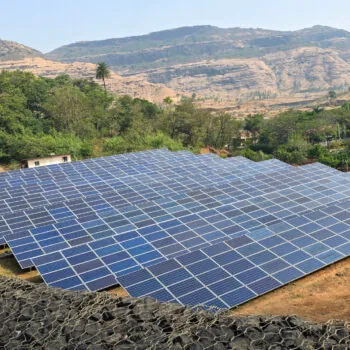The UK House of Lords EU Energy and Environment Committee is currently conducting an inquiry into EU Energy Governance. The inquiry is an important opportunity to shine an independent light of scrutiny on to the challenging question of how to align national and European approaches to energy markets and policy.
As part of the inquiry I was invited to speak to a workshop organised by the Committee on 15 October 2015. What follows is an edited version of my remarks to the Committee workshop. See also E3G’s written evidence submitted to the Committee.
Introduction
I’ve been tasked with drawing the strands of this discussion together. This is a difficult job. The EU Energy Governance debate is characterised by a set of rather disparate strands that are not easily reconcilable, that lack coherence.
In recent months we have heard seemingly incompatible calls for:
- A robust EU energy governance system that gives certainty to investors on the one hand, but full flexibility and a light touch approach on planning and reporting on the other.
- A move to fully open and competitive European energy markets on the one hand, but control over energy mix to remain fully national on the other.
- Targets to be EU-binding on the one hand, but on the other for those targets to place no additional requirements on the member states that collectively make up the EU.
Overcoming incoherence
These conflicts are not isolated. The EU energy market and political landscape is riven by inconsistencies and contradicting policies that cannibalise one another.
Policy incoherence and policy cannibalism are not abstract, academic problems. Incoherence means higher costs to meet our decarbonisation goals, and higher costs to meet our energy security goals – and these costs are inevitably borne by consumers or taxpayers.
It should be a fundamental role for an EU Energy Governance system to seek to overcome such inconsistencies, and ensure energy policy goals can be reliably met on an ongoing basis.
There are at least three layers of incoherence that need to be addressed.
The first layer of incoherence is geographical, between different countries and between member states and the EU. National decisions that look completely rational when made in isolation become collectively incoherent when viewed at an aggregate level. Interventions and strategies from one country can undermine interventions and strategies from its neighbours.
As a previous report from this Committee concluded, “No Country is an Energy Island”. The interconnected nature of our energy system makes countries increasingly interdependent. The capacity market discussion is a good example of this: if we have an interconnected system with open trade, then security standards are a fundamentally cross-border issue. Instead we’ve ended up with a bewildering melange of different national approaches.
The second layer of incoherence is sectoral incoherence. Different assumptions and standards are being used for different energy investment types, and there is a particularly large gap between the supply side and the demand side. Delivering the EU’s energy efficient targets, for example, should substantially reduce EU gas demand, but the EU is planning and financing gas import infrastructure on the assumption of a significant rise in gas demand. Both cannot be correct, and the disconnection between the two risks wasting money and creating underutilising assets.
The third layer is temporal incoherence, or what Bank of England governor Mark Carney labelled the Tragedy of the Horizon. Policies and investment decisions can often be made in response to short-term pressures and immediate crises, but the infrastructure that is built as a result has an economic lifetime of decades. Anything built now will still be on our system in 2050, when we need to have achieved a decarbonised system – but coal power plant are still being planned; and new gas import pipelines are still being built.
Mark Carney’s recent remarks have changed the game in terms of our understanding of the risks of stranded assets. This is not solely a question of individual companies losing money on the basis of bad investment decisions: overinvestment in hydrocarbon assets present systemic risks to our financial system. If the risks from stranded assets are now of such sufficient magnitude to be of concern to financial governance in the Bank of England, then this points to a deep-seated failure in Energy Governance as well.
What’s the response?
Those are the problems that we are grappling with in the EU Energy Governance discussion.
I want to comment now on the potential solutions.
First, the idea of national energy plans has received considerable attention. These would be similar to the Carbon Plan produced in the UK. If done right, the national energy plans can support greater transparency and predictability of policy, and provide insight for market actors on the aggregate impacts of national policy interventions.
But the national energy plans will only be as successful as what is done with them.
Many member states have been pushing for these to be as light touch as possible, driven by concerns of increasing administrative burdens. A worst case scenario would be a set of national energy plans so vague and unspecific that they play little useful role at all.
Instead, the national energy plans should be seen as a way of supporting member states to implement better policies and more efficient markets. We need a system for checking the collective consistency of the national plans, and stress testing their collective resilience against a range of shocks and risks.
My view is that the European Commission should not play this support role for member states, as there is too much potential conflict of interest with their role in proposing legislation and enforcing market rules. Instead, I see a role for an independent European Energy and Climate Observatory, to assess the robustness of the plans and to provide advice and support to national governments in understanding their implications. This would be similar to the role the Committee on Climate Change plays in the UK.
The Observatory should also flag up when the EU is not on track to meet its policy goals. It is then up to the Commission, European Council and European Parliament to take the requisite action. There cannot be no comment on, and no consequences of, policy failure.
Secondly, not everything has to happen at the EU level all at once. Regional collaboration offers the possibility for benefitting from many of the gains of a more integrated energy market, while remaining attuned to individual national circumstances.
However regional collaboration will only be as successful as what it actually does in practice.
Europe is criss-crossed with a whole range of differing regional collaboration initiatives – many of which start with good political intentions but fail to achieve very much because they are not tasked with actually delivering anything.
To get the most out of regional collaboration, we need to be serious about specific energy market functions being delivered at a regional level – for example through moving to regional Independent System Operators to conduct grid planning and system balancing. The North Seas region should be the first testing ground for making this work.
Finally, the EU itself needs to up its game on energy governance. Consistency starts at home.
European energy governance will only be as successful as the coherence of the direction of travel it achieves.
If the 2030 renewables, efficiency and greenhouse gas targets are to be credible, then they need to be directly reflected in European-level policies and funding mechanisms. This includes the electricity and gas infrastructure that is prioritised as Projects of Common Interest and given funding through the Connecting Europe Facility, the European Fund for Strategic Investment, and other funding streams. The rules are not there yet to make that happen, and we are risking taxpayer money as a result.
Similarly, if the EU’s Energy Union objectives require hundreds of billions of Euros of investment to be realised, then this should be a core focus of the Capital Markets Union rather than the Energy Union alone. If the future of energy technologies is increasingly smart and digital, then energy needs to be a core part of the Digital Single Market agenda. The dots are not yet fully joined.
Conclusions: European energy governance and the UK national interest
My remarks so far have focused on how to improve EU Energy Governance for the sake of Europe as a whole. I want to close with a few reflections on the UK’s own national interest in this debate.
Recent media reports have pointed towards an ongoing split between UK and Germany over the ‘EU-binding’ 2030 renewables target agreed by the European Council in October 2014. Germany’s position is that there must be consequences if the target is not being met – ‘EU binding’ cannot mean ‘EU hoping’. The UK has been resisting this.
I’m frankly confused about why the UK would want to continue to spend political capital on ‘fighting the last war’, particularly given the far more pressing issues on the UK priority list. Last October the UK won the argument that the renewables target should be binding at EU rather than national level. It has little to gain in hollowing out renewables governance arrangements still further.
The UK’s legally binding Climate Change Act, to which the UK government remains committed, means the UK needs to deliver deep carbon reductions across its energy system by 2030. According to the Committee on Climate Change, this will likely require renewable electricity of at least 40-55%, as well as an increase in renewable heat and (to a lesser extent) transport. It is improbable that a UK share of an EU-wide 27% renewables target would require the UK to do very much more on renewables than it will need to do anyway under the conditions of its own domestic legislation.
In this context, the UK should instead focus on what it needs from EU Energy Governance in order to meet its own decarbonisation, security and affordability priorities. This includes:
- A level playing field, by ensuring other EU countries adopt similar requirements to what the UK has already implemented domestically.
- A focus on cost reduction of low carbon technologies through coordinated deployment
- Access to flexibility resources via interconnection, and clear rules on what happens at times of system stress
- Market arrangements market arrangements that continue to work efficiently and drive investment in a largely decarbonised power system.
In summary, both the interests of the EU as a whole, and the national interests specifically of the UK, should lie in driving a strong and positive reform agenda that makes EU energy governance more consistent, more effective, more efficient, more coordinated and better for consumers. I hope the work of the Committee will provide an impetus for making this happen.
This project has received funding from the European Commission through a LIFE grant. The content of this section reflects only the author's view.



